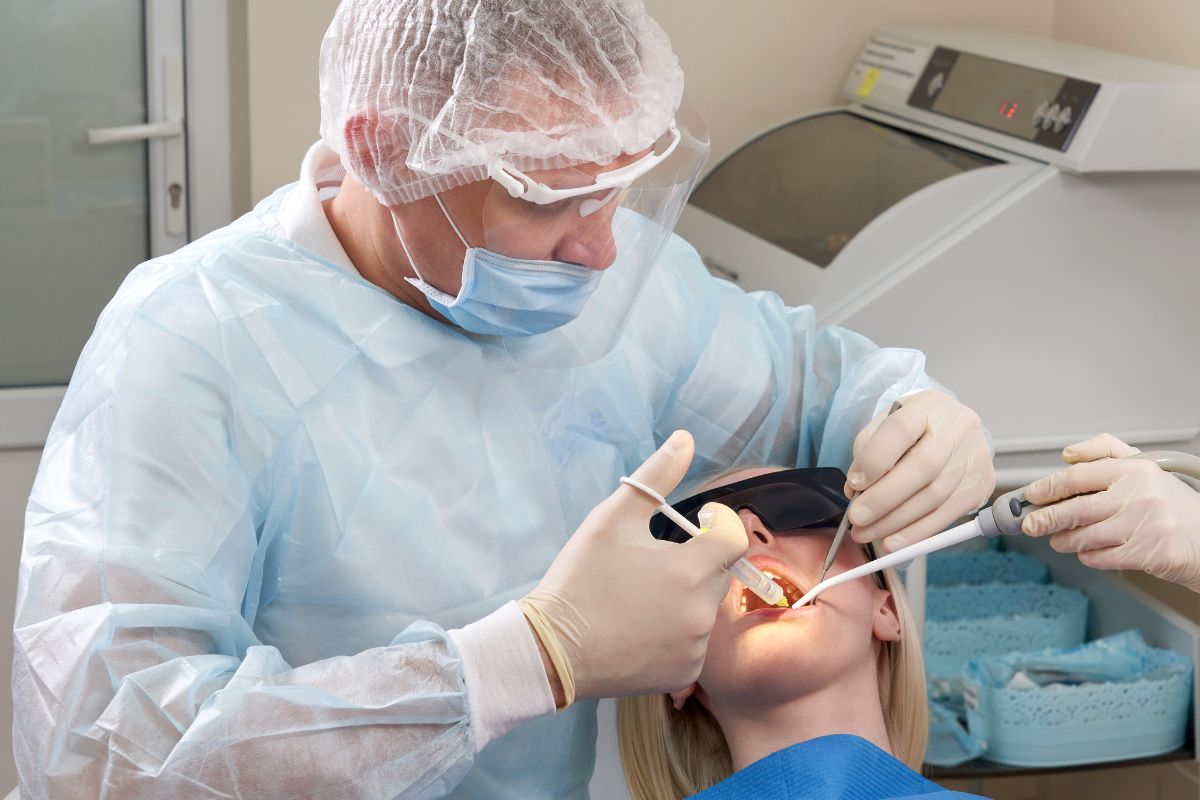Efficiency is a critical aspect of oral surgery. Every procedure demands enhanced accuracy and finesse to ensure optimal results. Oral surgical instruments having precision craft and made with German stainless steel are central to achieving these goals.
Here, we will discuss how quality dentistry tools enable surgeons to perform complex procedures quickly and precisely.
The Evolution of Oral Surgical Instruments
Over the years, dental surgical instruments have evolved significantly, driven by technological advancements and new techniques. From simple hand tools to sophisticated electronic devices, these instruments have transformed how dentists perform procedures, enhancing efficiency and precision.
Traditional Hand Instruments
Traditionally, oral surgeons relied on essential hand tools for various procedures.
These dental surgical instruments included:
- Scalpels
- Forceps
- Elevators
- Retractors
Each serves a specific purpose in the surgical process. While effective, these instruments often require a steady hand and precise technique to achieve optimal results.
Modern Innovations
In recent years, oral surgery has witnessed a surge in technological innovations, which have led to the development of advanced oral surgical instruments. Powered instruments such as ultrasonic scalers and rotary handpieces have revolutionized surgical procedures, allowing for greater control and efficiency.
Additionally, imaging technologies such as cone beam computed tomography (CBCT) have enabled surgeons to visualize anatomical structures with unparalleled clarity, facilitating more precise and accurate interventions.
Key Considerations in Instrument Selection
Selecting suitable dental surgery instruments is crucial for ensuring the success of any procedure. Several factors must be considered when choosing these dental tools:
Precision and Accuracy
Above all else, oral surgical instruments must offer exceptional precision and accuracy. Instruments with fine tips and ergonomic designs enable surgeons to confidently perform delicate maneuvers, minimizing the risk of damage to surrounding tissues.
Durability and Reliability
Durability is another critical factor to consider when selecting Dental surgical instruments. High-quality materials such as stainless steel ensure long-term reliability, allowing instruments to withstand repeated sterilization and use without compromising performance.
Ergonomics and Comfort
Comfort is paramount for surgeons who may spend hours performing intricate procedures. Dental instruments with ergonomic designs reduce hand fatigue and strain, enabling surgeons to maintain optimal precision and control throughout the surgery.
Common Types of Oral Surgical Instruments
A wide array of dental surgery instruments is available to meet the diverse needs of oral surgeons.
Some of the most common types include:
Scalpels
Scalpels are precision cutting instruments used for making incisions in soft tissue. Available in various sizes and blade shapes, scalpels allow surgeons to achieve precise cuts with minimal trauma to surrounding tissues.
Forceps
Forceps are used to grasp and manipulate tissues during surgical procedures. Different designs tailored to specific tasks, such as tooth extraction or tissue retraction, provide surgeons with the skill and control needed to perform delicate maneuvers.
Elevators
Elevators are instruments used for luxating and extracting teeth from the socket. Available in straight, curved, and angled designs, elevators facilitate the atraumatic removal of teeth while minimizing trauma to surrounding bone and soft tissue.
Retractors
Retractors are essential for providing optimal visibility and access during oral surgery. By holding tissues away from the surgical site, retractors enable surgeons to work precisely and efficiently and ensure clear visualization throughout the procedure.
Strategies for Optimizing Oral Surgical Instruments Efficiency
Optimizing dentistry instruments’ efficiency involves proper maintenance, organization, and strategic utilization. Here are some strategies to achieve this:
Routine Maintenance
Regularly inspect and maintain oral surgical instruments to ensure optimal working conditions.
This includes:
- Sharpening blades
- Replacing worn-out components
- Repairing any damage promptly
Well-maintained instruments perform better and reduce the risk of complications during procedures.
Proper Sterilization Protocols
Adhere strictly to sterilization protocols recommended by regulatory bodies and manufacturers. Properly sterilized instruments prevent the spread of infections and maintain their functionality over time. Implement systems for tracking sterilization cycles to ensure compliance.
Organized Instrumentation Setup
Organize surgical instruments logically and ergonomically to facilitate efficient access during procedures. Utilize instrument trays or organizers that group similar instruments. This will make it easier for the surgical team to locate and use them promptly.
Instruments Standardization
Standardize the selection of instruments used across procedures to streamline workflows and reduce the time spent searching for specific tools. This will also aid in inventory management and ensure consistency in surgical techniques.
Training and Education
Provide comprehensive training to surgical staff on properly using and handling oral instruments. Educate them on instrument functionality, maintenance protocols, and best practices for efficient utilization.
Continuous education ensures staff have the knowledge and skills to optimize instrument efficiency.
Invest in Quality Instruments
Invest in high-quality surgical instruments that are durable and designed for precision. While initial costs may be higher, high-quality oral surgical instruments offer better performance and longevity, ultimately saving time and resources.
Instrument Tracking Systems
Implement instrument tracking systems to monitor usage, maintenance schedules, and inventory levels. This allows for timely maintenance and replacement of instruments, minimizing downtime during procedures due to equipment issues.
Efficient Instrument Handling
Train surgical staff on efficient instrument handling techniques to minimize unnecessary movements and delays during procedures. Emphasize proper instrument passing protocols to ensure seamless coordination among team members.
Feedback Mechanisms
Establish feedback mechanisms for staff to report any issues or suggestions regarding instrument efficiency. Encourage open communication to identify areas for improvement and implement necessary changes.
Continuous Improvement
Review and assess instrument utilization processes regularly to identify areas for optimization. Seek feedback from the surgical team and continually incorporate advancements in instrument technology or techniques to enhance efficiency.
Conclusion
The importance of oral surgical instruments cannot be overstated. These designed tools maximize efficiency, precision, and patient outcomes. By embracing technological advancements and selecting suitable instruments for each procedure, oral surgeons can elevate the standard of care and deliver exceptional results.












